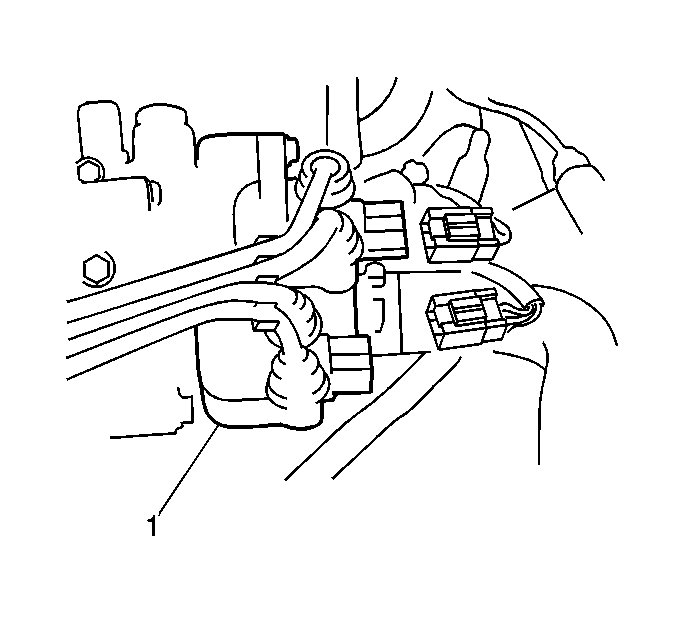For 1990-2009 cars only
Perform a compression test in order to determine the cylinder compression pressure. Use a compression test in order to diagnose lack of power, excessive oil consumption, or poor fuel economy.
- Verify that the battery is fully charged or close to fully charged.
- Stop the engine and remove the four spark plugs.
- Disconnect the electrical connectors at both ignition coils (1,2).
- Remove the Main Relay (1) from the Relay Box (2).
- Install a compression gage (2) into a spark plug hole.
- Depress the clutch pedal (on vehicles that are equipped with a manual transmission).
- Depress the accelerator pedal to the floor for a wide open throttle.
- Crank the engine through four compression strokes for each cylinder being tested.
- Measure the highest pressure reading on the compression gage.
- Repeat the compression test procedures for the remaining three cylinders.
- Remove the compression gage from the engine.
- Install the four spark plugs.
- Reconnect the electrical connectors at both ignition coils (1,2).
- Reconnect the Main Relay (1) to the Relay Box (2).
- Inspect for the following conditions:
Important: Allow the engine to warm up to normal operating temperature.



Important: The maximum allowable compression pressure difference between any two cylinders is 100 kPa (15 psi).
| - | The standard compression pressure is 1,350 kPa (192 psi). |
| - | The minimum allowable compression pressure is 1,100 kPa (156 psi). |


| - | Normal operation |
| - | The pistons, piston rings and valves are operating normally if the cylinder compression pressure increases quickly and evenly to the compression standard (1,500 kPa (218 psi). |
| - | Faulty piston rings |
| - | The following actions indicate that the piston rings are faulty: |
| - | The cylinder compression is low on the first stroke. |
| - | The cylinder compression increases on the following strokes but does not reach the compression standard. |
| - | Add oil in order to improve the compression pressure. |
| - | Faulty valves |
| - | The following actions indicate that the valves are faulty: |
| - | The cylinder compression is low on the first stroke. |
| - | The cylinder compression does not increase on the following strokes. |
